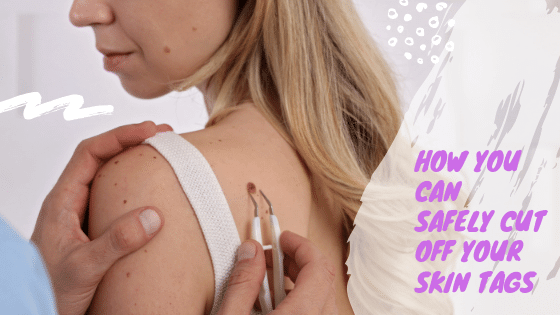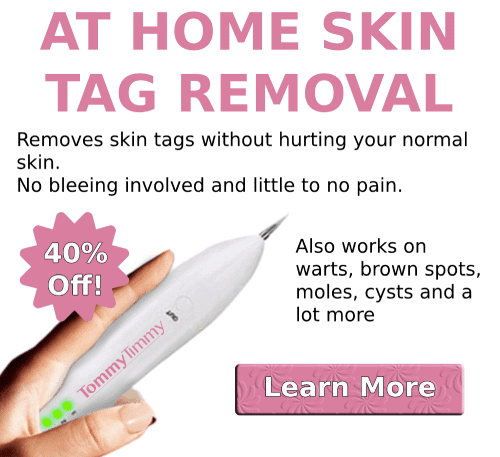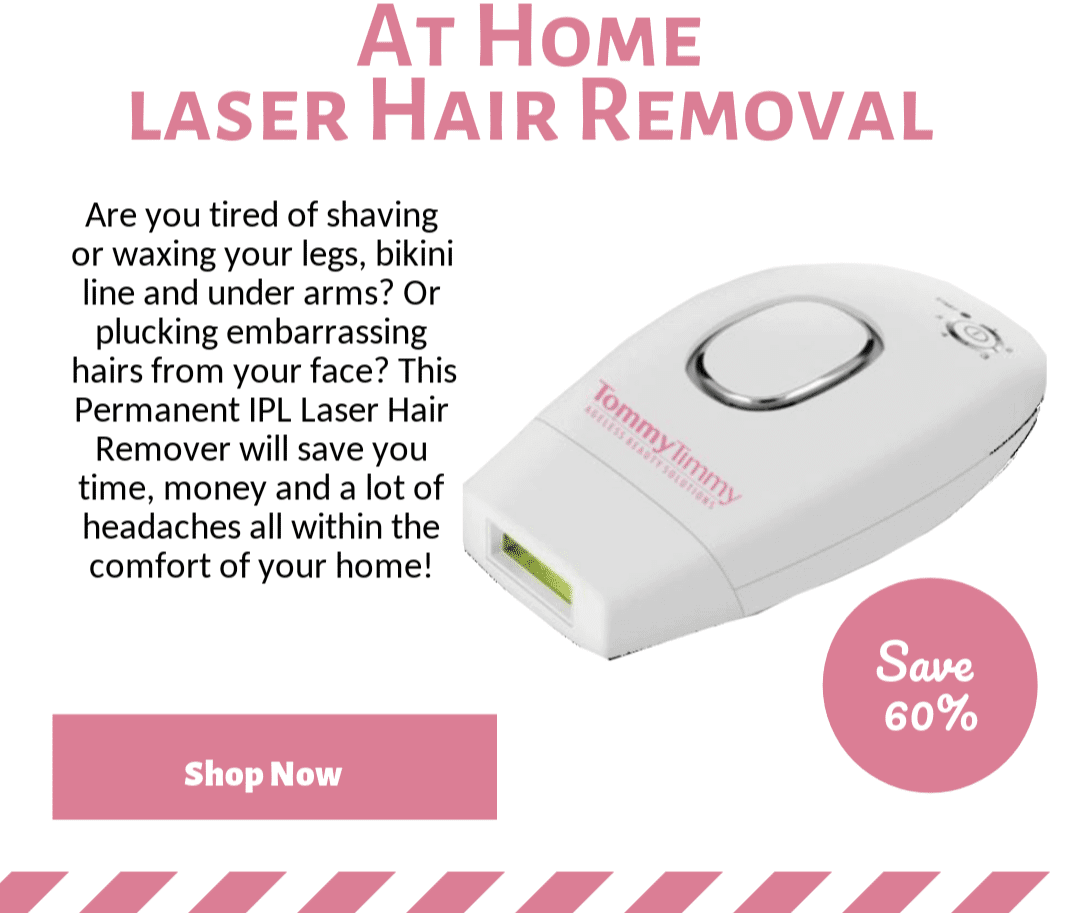Cutaneous skin tags are small, entirely benign pieces or sacs of skin that can appear pretty much anywhere on the body but are most common in high friction areas. They are flesh-colored, painless, and very common though many people find them irritating or unattractive.
Despite their common nature, we know very little about skin tags other than the fact that they are of cosmetic concern to many people who develop them.
Over-the-counter remedies and medical treatments for skin tag removal have become increasingly popular over the last few decades.
Many people choose to cut off skin tags with scissors or a scalpel at home. So, should you be cutting off skin tags with scissors?
Contents
Are there special skin tag removal scissors?
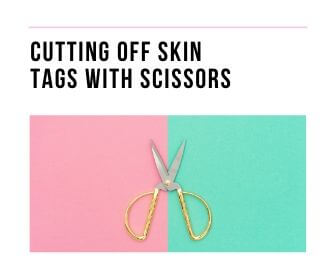
There isn’t necessarily a need to remove skin tags, whether you undertake a costly medical removal procedure or do it at home. After all, skin tags, also known as acrochordon, pose no risk to your health and well-being. The exception to this rule is in cases of infection or suspected melanoma.
When to Worry About Your Skin Tags
You will seldomly need to worry about skin tags as they are almost always harmless. However, skin tags can become infected if the skin tears after being caught on clothing or jewelry. If your skin tags become red, swollen, sore, or weep cloudy liquid, it would be best for you to see your doctor.
There is also a chance that a skin tag could be an epidermoid cyst, in which case you should see a doctor rather than trying to remove it at home. Epidermoid cysts also tend to be benign and are located under the skin rather than hanging onto it by a thin strip of flesh.
Attempting to remove or lance an epidermoid cyst at home can cause infection and severe scarring. Using scissors, in this case, is probably not such a great idea.
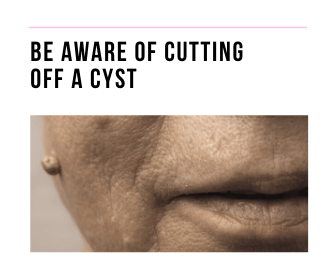
Difference Between Skin Tags And Cysts
You can tell the difference between a skin tag and an epidermoid cyst in a few ways. A skin tag will be soft and attached to the skin, whereas an epidermoid cyst is a hard lump under the skin. Skin tags also tend to appear in high friction areas like the armpits and neck, whereas cysts are most likely to form on the face and neck. Finally, you should be able to grip and gently pull a skin tag away from the skin to show the thin strip of flesh, which attaches it to the rest of the skin.
Unlike skin tags, a raised mole or freckle should not be removed at home without consulting a medical professional. While they may resemble large skin tags, they will bleed and scar heavily if cut from the body. They can also cause intense pain.
Should You Cut Off Skin Tags With Scissors?
You have three options when it comes to skin tag removal.
Firstly, you can go to your doctor or a clinic to have your skin tags removed professionally for a fee. They will numb and sterilize the area and then snip them off for you. This is the safest and most efficient invasive method.
Secondly, there are over-the-counter treatments designed to remove skin tags chemically. These will freeze or otherwise shrink the tag over time and present the lowest risk of infection, though they take more time than cutting.
Thirdly, you can remove the skin tags at home with scissors or a scalpel. This may be more painful than a professional removal and is invasive, unlike chemical at-home treatments.
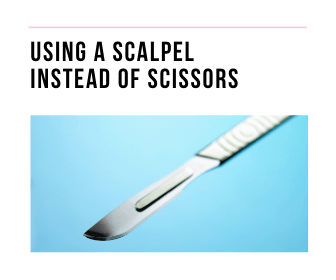
Many people opt to remove small skin tags at home, either with an over-the-counter treatment or by snipping them off with skin tag scissors because it’s relatively easy and safe.
Cutting skin tags off at home is not ideal, and there are some risks.
The Risks of Removing Skin Tags Yourself
The most medically pressing risk of a home removal, so long as you are sure it’s a skin tag, is the chance of infection. If you get an infection following a home removal, you are far more likely to have a lasting scar, even if it’s a minor infection. More than this, you are likely to need medical intervention if your home removal ends in infection.
There is also the small chance that a skin tag may be something more serious. Acrochordon is generally harmless, but it can look similar to some types of melanoma. Do not seek to cut away skin tags unless you are sure that’s what they are, and if you have recurring tags on the same spot, make sure to raise this with your doctor.

So, should you cut off skin tags with scissors? The truth is that this is the wrong question to ask. The right question is how skin tags can be cut away safely at home.
Tools for Safely Removing Skin Tags at Home
If you’re going to remove your skin tags at home, you should prepare thoroughly to ensure you remove them safely and efficiently. Firstly, you will need sterile surgical gloves, rubbing alcohol or hand sanitizer, and a sharp pair of scissors or a razor blade. If you’re using scissors, a pair of cuticle scissors or sharp hairdressing scissors would be best as thick kitchen scissors may trap additional skin. You can also use special skin tag removal scissors.
You want to cut the skin tag at its thinnest point, which should be closest to the rest of your skin. Any damage to the surrounding skin increases the risk of infection and scarring.
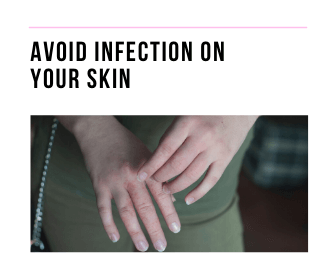
It would be best to have sterile cotton pads, antiseptic cream, and a bandaid to hand for after the removal. If the tag has a wide stem, you might find it bleeds a little and requires a dressing. Plus, it’s always a good idea to have these items to hand during such procedures if there’s an accident.
How to Safely Remove Skin Tags with Scissors
Once you have your tools laid out before you, you can begin removing your skin tags.
Here’s how you can remove your skin tags safely;
1. Check that your scissors or razor blade is sharp enough. A dull blade will not provide a clean cut, and this will increase the chances of infection. A new razor blade, scalpel, or set of cuticle scissors is the best option, but sharpening your tools is a good second.
2. Numb the area thoroughly with ice. Removing skin tags isn’t very painful, but numbing the area will make the process more comfortable and allow you to focus.
3. Sterilize the blade thoroughly with rubbing alcohol or hand sanitizer before beginning.
4. Sterilize the skin tag and the area around it with rubbing alcohol or hand sanitizer and put on disposable gloves.
5. Pull the tip of the skin tag to expose the stem and carefully cut it from your body with a razor or scissors. Be careful not to nick the healthy skin. If you do, treat the wound quickly and only remove the tag after it has healed.
6. Get rid of the tag and stop any bleeding. Also, put antiseptic cream on the wound. If the wound has bled, you will need a bandaid, but if it doesn’t, you can leave it to dry in the air.
The cut should heal within a few days and leave no noticeable scar so long as you do not pick at the scab or otherwise tamper with the wound as it heals.
Is Cutting With Scissors the Best Way to Remove Skin Tags?
If you make sure that you’re using sharp implements and sterilize them well, cutting off skin tags yourself can be a very effective removal method. This is undoubtedly the case for small tags, though larger tags can bleed and become infected more easily.
If you have large skin tags, if you have many skin tags, or if you’re not sure that they are skin tags, then it may be best to consider the other options open to you.
If you have concerns about just what the tags are, your first port of call should be with a local doctor who can assess them accurately. Skin tags are almost always benign, but some more serious conditions present themselves in the same way, so it never hurts to check it out.
If you are worried about your ability to get sharp tools or you’re concerned, you might be unable to sanitize them thoroughly (or even if you’re concerned about the pain), there are other ways.
You can always use pharmaceutical remedies that are less prone to cause infection.
These methods remove the tags without breaking the skin, which means that it takes longer, but it is also safer (in fact, it’s the most reliable way to do it without seeing a doctor). However, the downside to this is that it takes longer to remove the tags, and you will have to be very careful not to get the chemical mix on any healthy skin.
Will There Be Scarring?
When you’re cutting skin, there is always a chance that a scar will form, but if you’re using sharp tools on a small tag and the wound does not get infected, any scar is likely to be small. Nonetheless, those who remove skin tags at home are the most likely to be left with a scar. Those who use chemical removal methods or who visit a doctor seldom have noticeable scars.
Many people are unwilling to risk cutting off skin tags in noticeable places such as the neck or shoulders due to the possibility of scarring. Furthermore, if you find skin tags on susceptible areas such as the face, eyelids, or genitals, you should always have them removed by a doctor.
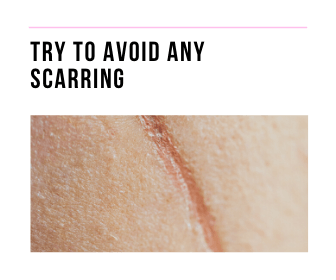
The most dangerous part of removing skin tags at home with scissors is, unsurprisingly, the fact that you run the risk of cutting healthy skin. If you do cut yourself, it is imperative that you immediately assess the wound. If the cut is clean and shallow, you should clean and dress it, letting it heal before attempting to remove the tag again. If the cut is deep or ragged, you should consult a doctor to avoid infection and scarring.
However, if you are careful, there is no reason you can’t remove skin tags safely at home. Remember that removing tags does not prevent them from forming again or forming on other parts of the body. Finally, never attempt to remove moles or cysts with a razor as you will cause bleeding, scarring, and potentially serious infection. A doctor should always undertake the removal of such things.
Summary:
1. Cutaneous skin tags, or acrochordon, are benign, fleshy growths that form most commonly on high friction areas of the body and are mostly removed for cosmetic reasons.
2. A doctor should assess skin tags if they become inflamed, swollen, painful, or seep pus.
3. Epidermoid cysts can be distinguished from skin tags by their texture and place under the skin; such cysts should not be cut or lanced at home.
4. Skin tag removal can be done at home with scissors or over-the-counter remedies or in a clinic by a medical professional.
5. Infection is a real risk of skin tags are poorly removed.
6. When cutting away skin tags at home, sharp scissors or blades are needed, and sterilization is necessary.
7. The tag area should be numbed and sterilized before cutting; pulling the skin tag away from the body allows for a clean cut.
8. If the wound bleeds, it is necessary to cover it with a band-aid after applying antiseptic cream.
9. Home removal with a blade is not the most recommended treatment method, especially if you doubt whether the growth is actually a skin tag.
10. Scarring is always a risk but can be minimized by a clean and efficient removal; larger tags are more likely to scar on removal than small ones.

